| Be The Change by Julie Leidel, 2020. Gouache on Illustration board, 20 x 24. New Year Greeting Card, artwork by Britsh illustrator Ethel Larcombe, early 1900-10s. Ethel Larcombe's, 1899 submission to The Studio Magazine entitled "Summer" 1900 children's book illustration by Ethel Larcombe. The Letter O from Larcombe's 1902 original alphabet design. One of Lacrombe's many book cover designs. 1917 design work for Sears, Roebuck, & C0. Designer unknown, but fits Larcombe's book design aesthetic. | As the idea for my next painting rolled around in my heart for a few weeks, I knew I wanted to have a strong visual to bring it alive with connection. I wanted this artwork to resonate with the historical time between 1890-1910 when the Art Nouveau Movement flourished and the time in which Mahatma Gandhi lived. The monarch butterfly has represented change across many cultures for centuries. This female figure in my artwork is not meant to be a fairy however, but it is more of a representation of the "hats" we wear in our lifetime. Similar to putting on a uniform, this is a way we become the job. It's more of a nostalgic take on why a super hero would wear a costume. I've heard many interviews with ordinary citizens put in extraordinary circumstances where the news heralds them "A Hero." Almost always, this hero never feels deserving of the title, they were just doing their part. That's exactly the point behind putting on your wings. We all can be that hero to someone by being the change we want to see in this world. "Be the change you wish to see in the world" is a beautiful quote, but it's not word for word from Gandhi in printed format. After some research, it is based on his printed teachings from 1913: "If we could change ourselves, the tendencies in the world would also change. As a man changes his own nature, so does the attitude of the world change towards him." In 1989, the L.A. Times asked Gandhi's family about the quote and this was their response. "The Gandhi family states that M. K. Gandhi was known to say this verse many times in his lifetime and believes it to be original with him." So to be as accurate as possible, this is why I wrote "Inspired by Gandhi" on the artwork. Notably in 1976, Arleen Lorrance wrote with the same idea "Receive all people as beautiful exactly where they are. Perceive problems as opportunities. Be the change you want to see happen instead of trying to change everyone else..." Many times the idea for my art's verse, and the idea for my art's composition & visual layout don't happen at the same time. I knew I wanted to base a painting off of Gandhi's teachings in Sept. of 2019 and include monarch butterflies. For my creative process, I muse over different ideas (usually just in my head) as the artwork starts to take shape in a very natural way. I keep my mind open and on the look out for inspiration. New Year 2020 comes around, and I can always count on my dear friend Robert Rust, co-author of The Arts & Crafts Home, and Arts & Crafts Architecture & Design Library to post the most wonderful, antique illustrations & cards on social media. I saw this amazing greeting card drawing, and I was in love. I stayed up all night on Dec. 29, 2019 creating my conceptual layout for the art. At the time, I didn't know who "LE" was, and neither did Robert. Weeks later, Laura Euler, author of The Glasgow Style, and Arts & Crafts Embroidery, gave us the missing link. LE is British illustrator Ethel Larcombe (1876-1940.) Anytime I can stumble across a new (to me) female A&C illustrator, I'm all in. I want to share my research of this amazing artist that was also thriving in the time of Gandhi (1869-1948), albeit in a much lesser known capacity. Ethel Larcombe was born in 1876 in Exeter, England where she lived all her life. Not to be confused with Ethel Thomson Larcombe (British tennis player, 1876-1965.) Her early influences included the book illustrations of Walter Crane and Kate Greenaway, whose work she studies and copied. William Morris’s Kelmscott Chaucer in 1896 inspired her to explore the Arts & Crafts style, and her artistic influences shifted to painters like Edward Burne-Jones and Dante Gabriel Rossetti. In the following years she decreased her use of medieval elements and concentrated on more modern Art Nouveau designs and winning many competitions. Her work was featured in The Studio Magazine. Other publications that featured her work were Stone, Von Larisch, and Salwey. Her typographic lettering was shown in 1902 in Italy, and a German publication alongside an original alphabet by Charles Rennie Mackintosh. This style soon caught the eye of prolific book designer Talwin Morris, the Art Director of Blackie & Son in Glasgow. He commissioned her to design several book bindings for the firm and its London subsidiary, Gresham, between 1904 and 1912. Today, many of Larcombe's bindings are misattributed to Talwin Morris. Larcombe’s work was usually more compact compared to Morris’s. She also provided the title pages and initials to Walter Shaw Sparrow's Women Painters of the World, published in 1905, seen below. In the Spring of 1917, American retailer Sears, Roebuck, & Co. hired her to design green-bordered cotton textile "coverettes" and catalogues to appeal to the female buyers looking to decorate children's rooms. Ethel is also well known for her illustrated "rag books" for Dean & Son. Her designs were also used in postcards printed by E. W. Savory Co. and she provided graphical design work for Arts & Crafts furniture designers Neatby & Evans. Not much is known about her personal life, sadly. Ethel Larcombe died in Exeter in 1940. This is one of my favorite things about being a Revival artist; I love to bring back not only the style of the Arts & Crafts and Art Nouveau movements, but also I love to raise awareness to some of my personal unsung heroes, the lesser known artists from this era. As I was writing, I discovered a lead on the 1917 Sears pamphlets. The last two images posted below have decorative designs that stand starkly against much of the other design work produced by Sears at that time, so I did a little more digging. I have a hunch both of these are Ethel's designs. The Glasgow School of Art put together a wonderful "Treasures of the GSA Library" online after GSA lost their centuries-old library collections in two separate and devastating fires in May 2014 and again in June 2018 before all renovations were complete. I don't believe this digital collection was available before the fires. This image below shows Ethel's 1905 cover (left) next to a 1917 Sears ad (right). Ethel Larcombe's unique typography is unmistakable in both. Lastly, I want the reader to understand that artists are inspired by other artists and have been since the beginning of time. Art history shows us time and time again how peers (and rivals) have influenced, innovated, and copied each others work whether they are living at the same time, or are divided by a century or more. When I saw this 1905 title page of Women Painters of the World illustrated by Ethel Larcombe, the first artist that popped into my 21st century mind was none other that of Mary Engelbreit. I'd be willing to bet she's been influenced by this book illustrator too. It's a small world, after all. |
|
|
AuthorJulie Leidel shares news and musings on inspiration for her artwork. Archives
May 2024
Categories
All
|

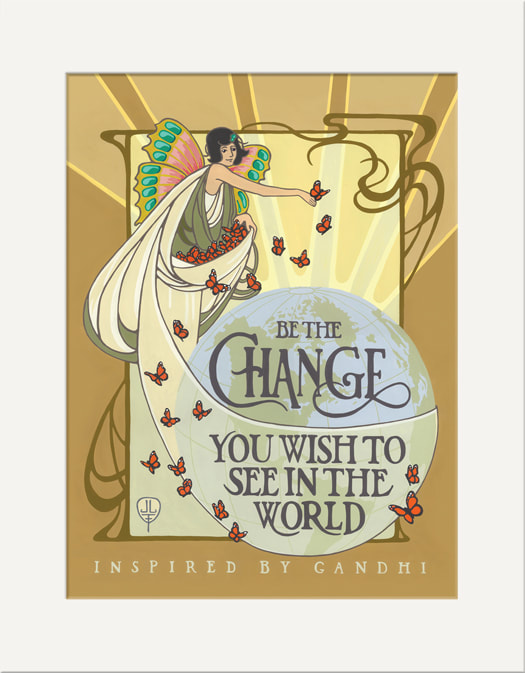
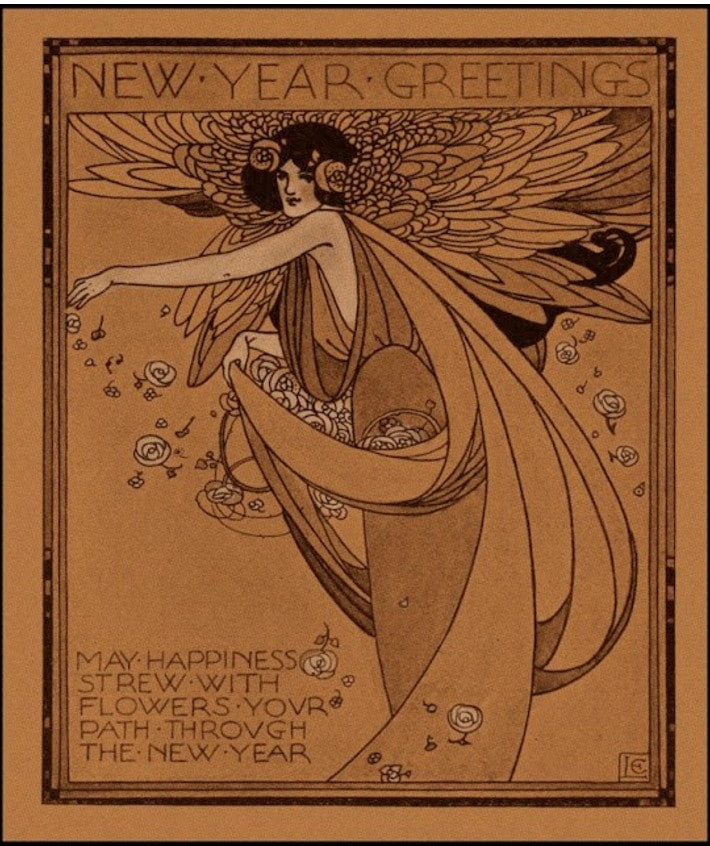
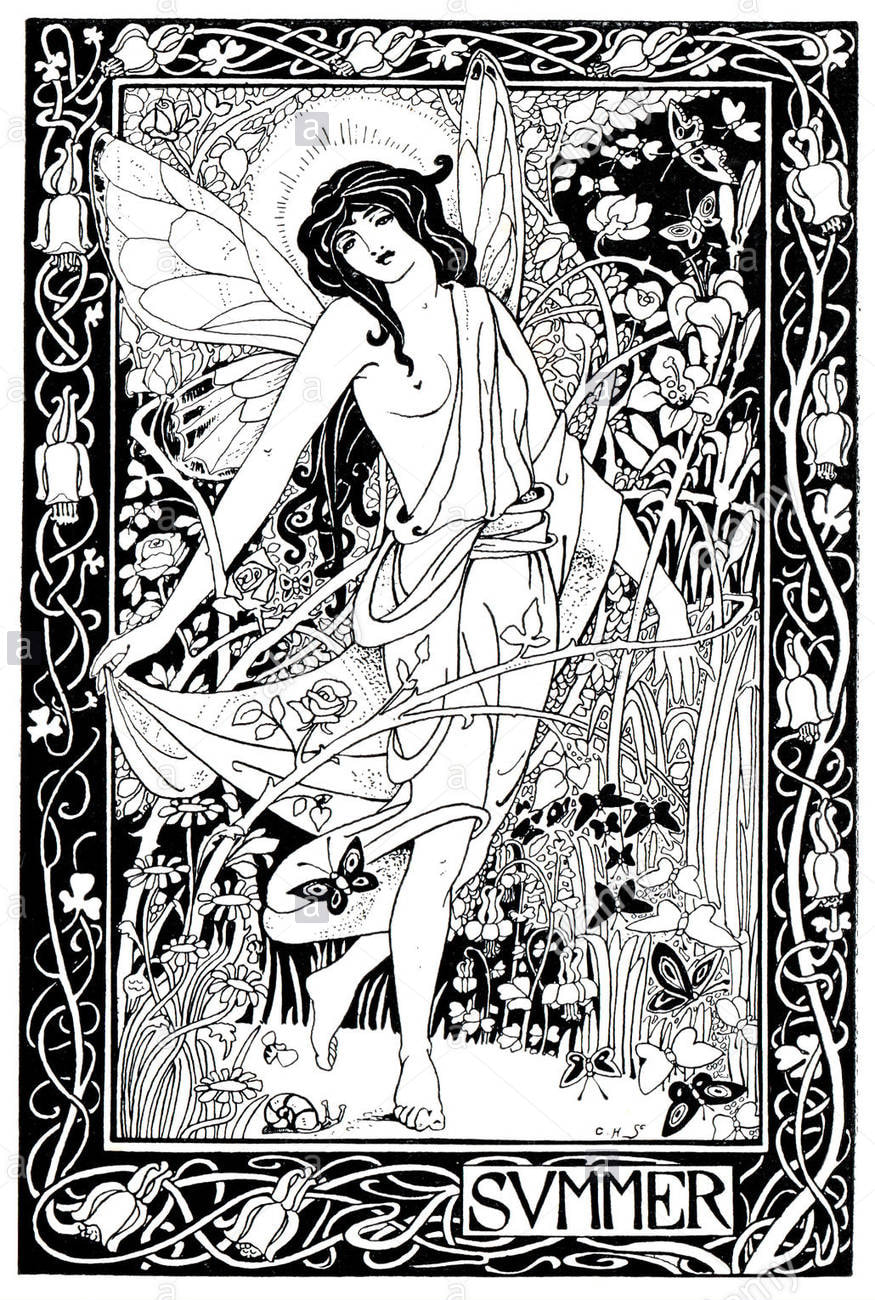
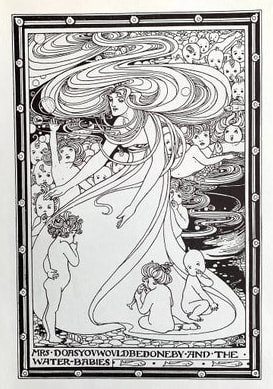
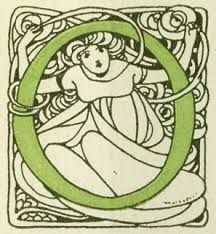
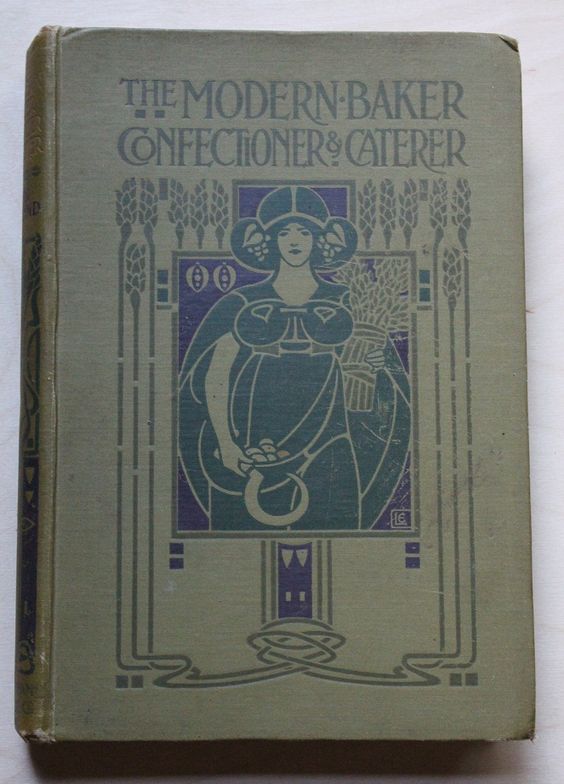
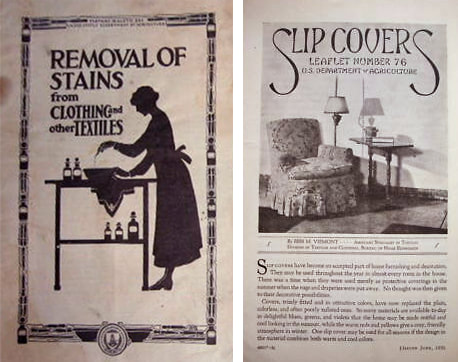
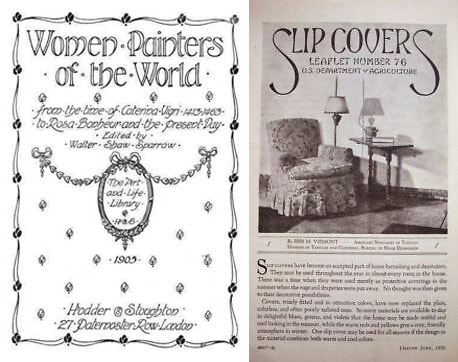
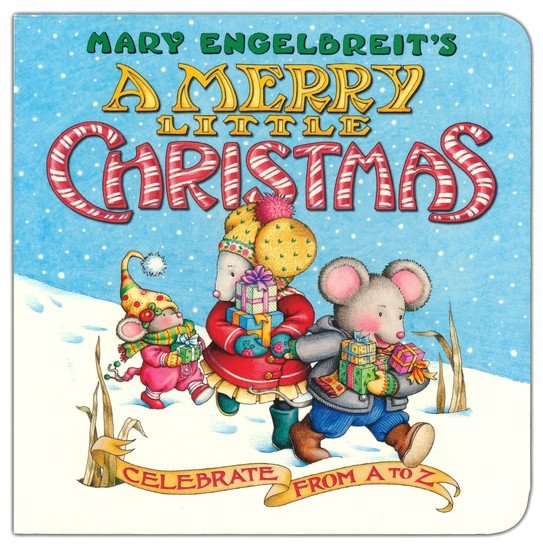
 RSS Feed
RSS Feed